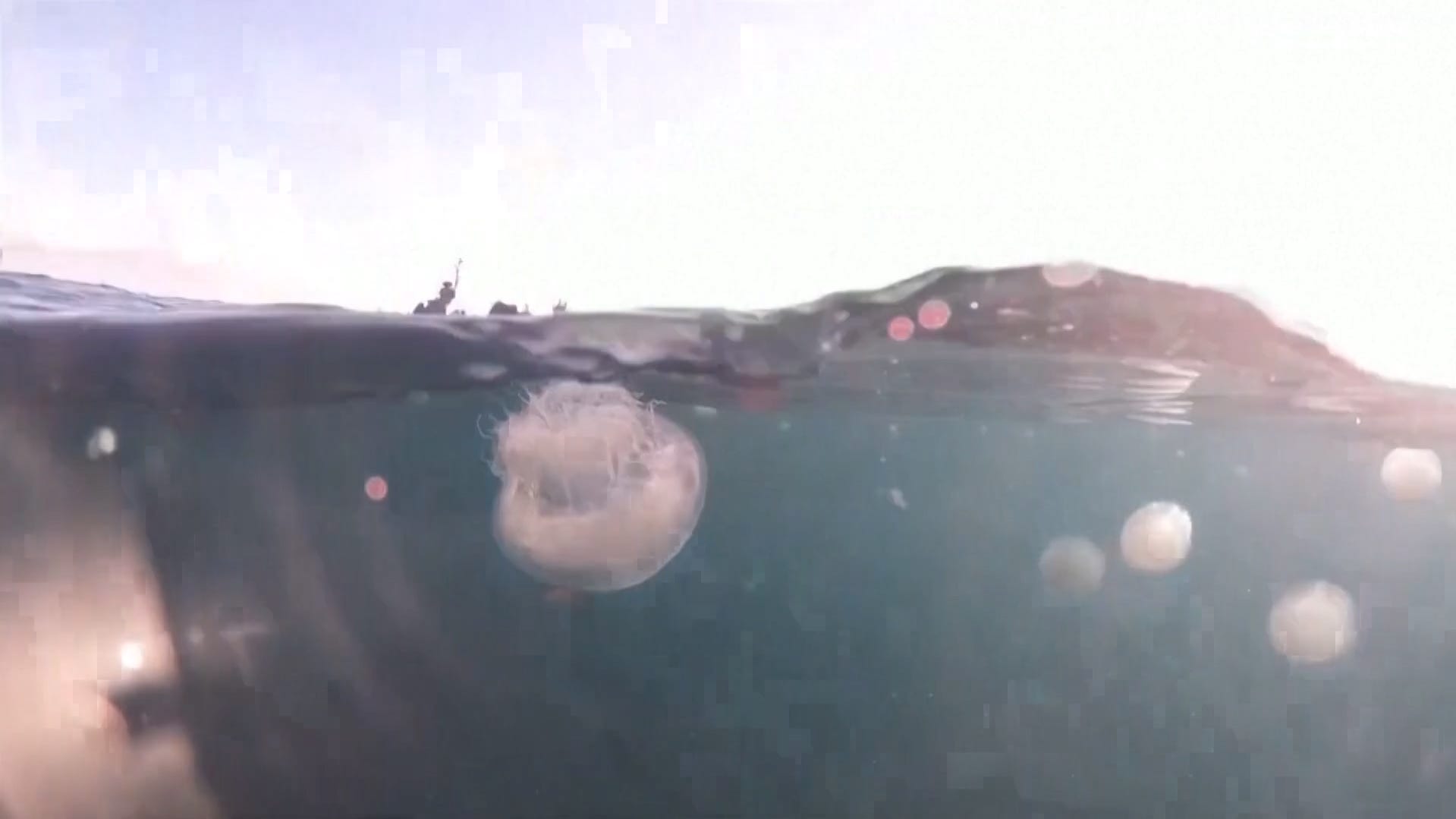Blooms of stinging jellyfish plague the East Coast in Summer 2025
Jellyfish are causing pain for beachgoers from Maine to Florida. Warming waters and human activity have helped boost jellyfish populations.

Jellyfish swarm halts reactors at France’s Gravelines nuclear plant
Jellyfish clog cooling systems at Gravelines nuclear plant, delaying reactor restart and potentially costing millions.
At Delaware’s Lewes Beach, Beach Patrol Captain Strohm Edwards has seen more jellyfish this year than any other and stings have tripled.
Along the Nantucket Sound shoreline, researchers believe massive groups of unusually large moon jellyfish — a species long thought to be harmless to people — have been stinging many swimmers in nearby Cape Cod towns.
And on Florida’s Daytona Beach, nearly 350 people were stung by jellyfish over Memorial Day weekend, according to A.J. Miller, deputy chief of Volusia County Beach Safety.
“Absolutely places are seeing increases in jellies year after year, and this summer in particular,” said Paul Bologna, director of the marine biology and coastal sciences program at Montclair State University.
As Americans flock to beaches to enjoy the last weeks of summer, jellyfish are causing pain for beachgoers from Maine to Florida. That’s in part because warming waters and human activity have helped boost jellyfish populations.
Jellyfish plague beaches this summer. Here’s why.
Jellyfish blooms occur when large numbers of jellyfish spawn or are swept into a certain area by winds and tides, according to Cathy Lucas, an associate professor of marine biology at the University of Southampton. Lucas said her research has found jellyfish populations ebb and flow in a roughly 20-year cycle and a number of factors can affect where they will flourish:
- Construction: The infrastructure humans build in the water ‒ houses, piers, wharves, jetties, and even oil rigs ‒ create new habitats for juvenile jellyfish, called polyps, to attach and grow, Bologna said.
- Climate change: Warmer waters can encourage some species of jellyfish in certain regions to grow and reproduce more, Lucas said. Changes in ocean temperature can also allow jellyfish to move further north and survive in areas they previously couldn’t.
- Pollution: Eutrophication, a process that occurs when excess fertilizer and nutrients get into the water, can create algal blooms that result in low levels of oxygen in the water. Jellies thrive in these dead zones because they need less oxygen than other kinds of marine life and their prey can’t swim away as fast, Bologna said.
- Overfishing: When commercial fishing decimates other species of fish, jellyfish have less competition for food, Lucas said.
Jellyfish forecast for late summer and fall
Different species of jellyfish appear in the waters along the East Coast over the course of the summer.
The Gulf Stream can carry Portuguese man o’ wars from the tropics to the mid-Atlantic through August and September, Bologna said. Box jellyfish may also arrive from the Caribbean, first appearing near the Carolinas and then making their way north near New Jersey in September and October, he said.
From Massachusetts to Maine, “big, giant” lion’s mane jellyfish are fairly common around the end of the summer, Bologna said. There have also been an increasing number of moon jellies in the waters around Cape Cod, which he said “seem to have a much more potent sting than your average moon jellies.”
Despite this, he said beachgoers should only be “minimally” concerned about the uptick in jellyfish sightings in 2025.
“There’s a lot of other things that are as dangerous, if not more so, than the jellies that are swimming in the water,” he said.
What to do if you’re stung by a jellyfish
If you’re stung by a jellyfish, Bologna recommended rinsing the area with salt water and plain vinegar to prevent the stinging cells from discharging. An over-the-counter product like StingNoMore can also help.
“Then a very hot compress helps denature the proteins which can make up the venoms or the toxins that the jellies produce,” he said.
Avoid a beach-day bummer: Here’s how to treat a jellyfish sting
If you still see tentacle fragments attached to your skin, don’t remove them with your hands, warned Dr. Jill Grimes, author of “The ULTIMATE College Student Health Handbook. “Use tweezers if available, or use a credit card to quickly scrape off remaining tentacles,” she previously told USA TODAY.
To alleviate the itch and burn of your sting, Grimes recommended applying a cool compress, but said you should “never put ice directly on the skin.”
Applying a topical steroid cream and taking oral antihistamines, such as diphenhydramine, fexofenadine, loratadine and cetirizine, can also help counter the effects of a jellyfish sting, she said.
Contributing: Elizabeth Weise and Caroline C. Boyle
Tags: environment







